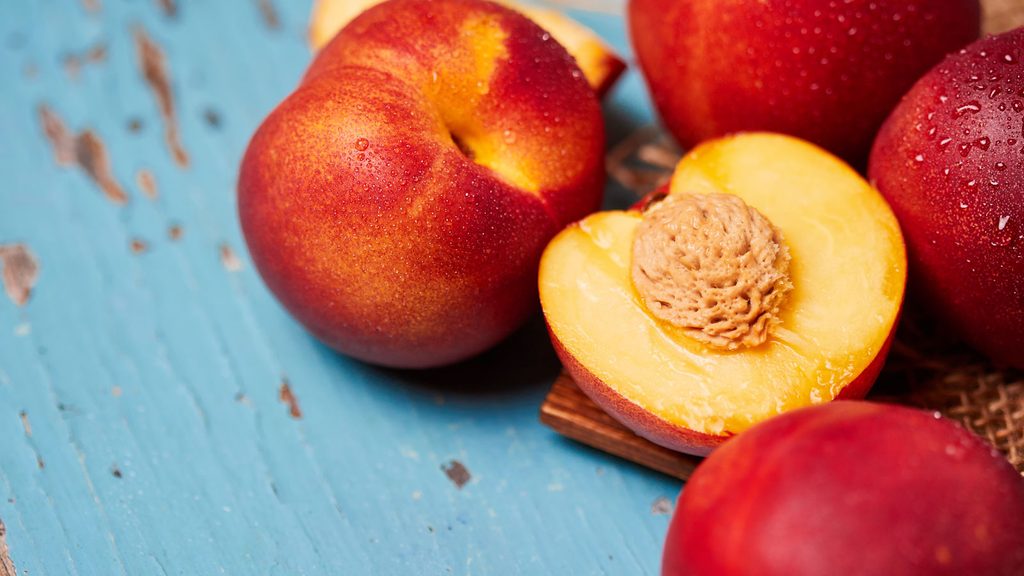4 Easy Steps for Freezing Nectarines

Summer is fleeting and so are its luscious stone fruits. But freezing nectarines will provide sun-drenched flavour when winter's dreary days arrive. It's easy to do with our handy tips.
It doesn’t take much effort to start freezing nectarines now and storing them for later. For just a little work, your reward will be a blast of summer flavour in a fruit smoothie or sweet nectarine dessert come winter.
Easy steps for freezing nectarines
Step 1: Prep
Choose nectarines that are ripe (slightly soft) and free from blemishes or bruises. A ripe nectarine separates easily from the pit, making prep easy.
- Rinse fruit of pesticides—and don’t forget to remove labels.
- Remove the skin. Blanch the whole fruit by gently placing it in boiling water for 30 seconds (I like using a slotted spoon). Cool. Then slide off the skin.
Editor’s tip: You may not need to remove the skin. It all depends on how you plan to use the fruit. Once frozen, nectarine skin becomes tough. For smoothies, this isn’t a big deal. For other uses, you’ll be glad you removed the skin.
Step 2: Slice the fruit
Can you freeze nectarines whole? Nope! When frozen, the pit becomes bitter and taints the flavour. Cut the nectarine in half and remove the pit.
Leave the fruit in halves, or cut it into slices. As you cut the nectarine, dip the pieces into a wash of lemon juice and water. (Mix 3 tablespoons of lemon juice into 1 quart of water.) This prevents the fresh-cut fruit from browning.
Step 3: Freeze
Line a rimmed baking sheet with parchment or waxed paper. Place cut fruit on the sheet with space between each piece to prevent it from sticking together. Freeze until solid.
Step 4: Pack it up
Place the frozen fruit in plastic zip bags and label with the fruit name and date. Lay bags flat in the freezer. (Also, learn which frozen foods are red flags for nutritionists.)
Editor’s tip: Use your frozen fruit within three months for optimum flavour.
How to use frozen nectarines
Frozen nectarines are perfect for smoothies, directly from the freezer, and work great in baked or cooked recipes. However, a frozen nectarine’s texture is different from fresh, once thawed. For this reason, they won’t do as well in fresh applications, such as a salad. But in January, a cobbler filled with summer’s finest fruit is nothing short of stellar!
Next, check out more in-season fruits to enjoy this summer.




